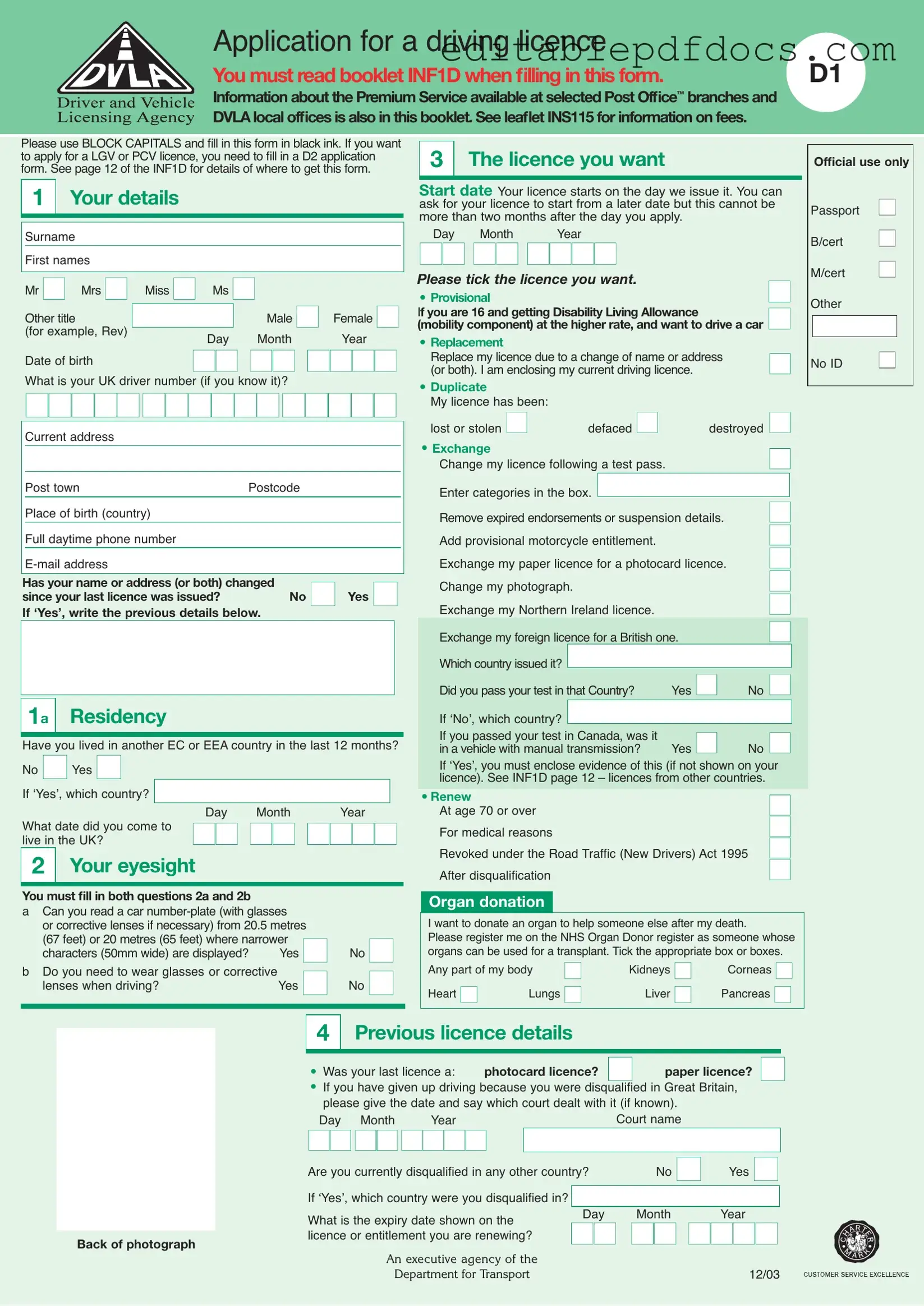The D1 DVLA form is an essential document for anyone looking to apply for, renew, or make changes to their driving licence in the UK. This form serves multiple purposes, including applications for provisional licences, replacements due to lost or stolen documents, and exchanges of foreign licences for a British one. To complete the D1 form accurately, applicants must provide personal details such as their name, address, date of birth, and contact information. Additionally, the form requires information about the applicant's eyesight, confirming their ability to read a number plate from a specified distance, and whether they need corrective lenses while driving. Medical history is also a critical aspect, as applicants must disclose any conditions that could affect their driving ability. The D1 form emphasizes the importance of identity verification, requiring documents like a passport or birth certificate, along with a signature from a reliable person if necessary. Furthermore, the form includes sections for organ donation preferences and previous licence details, making it a comprehensive tool for managing driving qualifications. Overall, understanding the D1 DVLA form is vital for ensuring a smooth application process and maintaining compliance with UK driving regulations.
